MINHO, DOURO AND TRÁS-OS-MONTES: THE CUISINES OF NORTHERN PORTUGAL
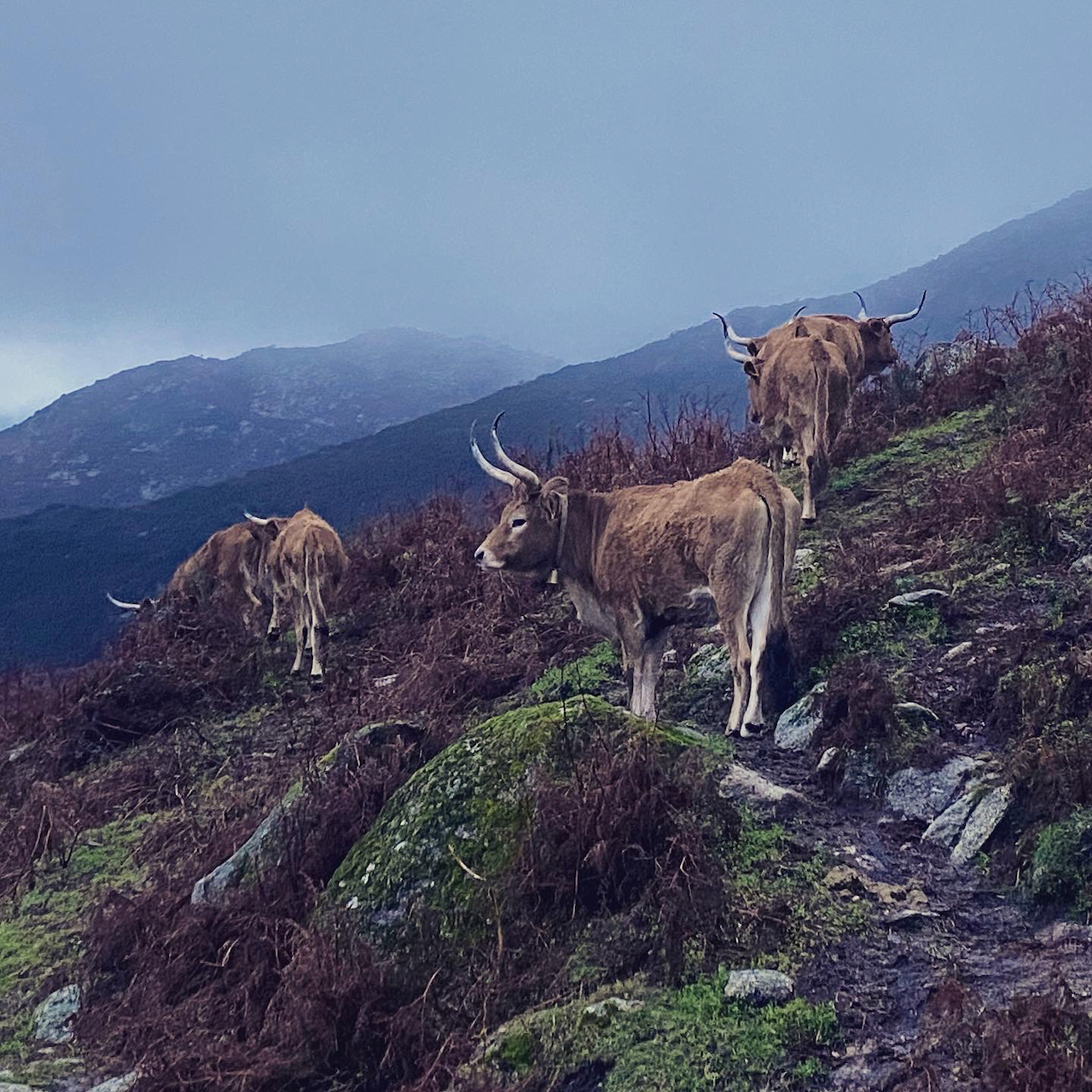
The Minho region: traditional dishes from the borderland
Where Portuguese food and Galician traditions blend
The province of Minho is located on the northwest of Portugal, with the Spanish autonomous community of Galicia to the north and the Atlantic ocean to the west. This is where Portugal was officially born as a nation, more specifically in the city of Guimarães in the year of 1143.
It would be virtually impossible to cover here all the traditional recipes that have their birthplace in the region of Minho, and so we shall focus on certain preparations and ingredients that characterize the gastronomia minhota, that is, the cuisine of Minho.
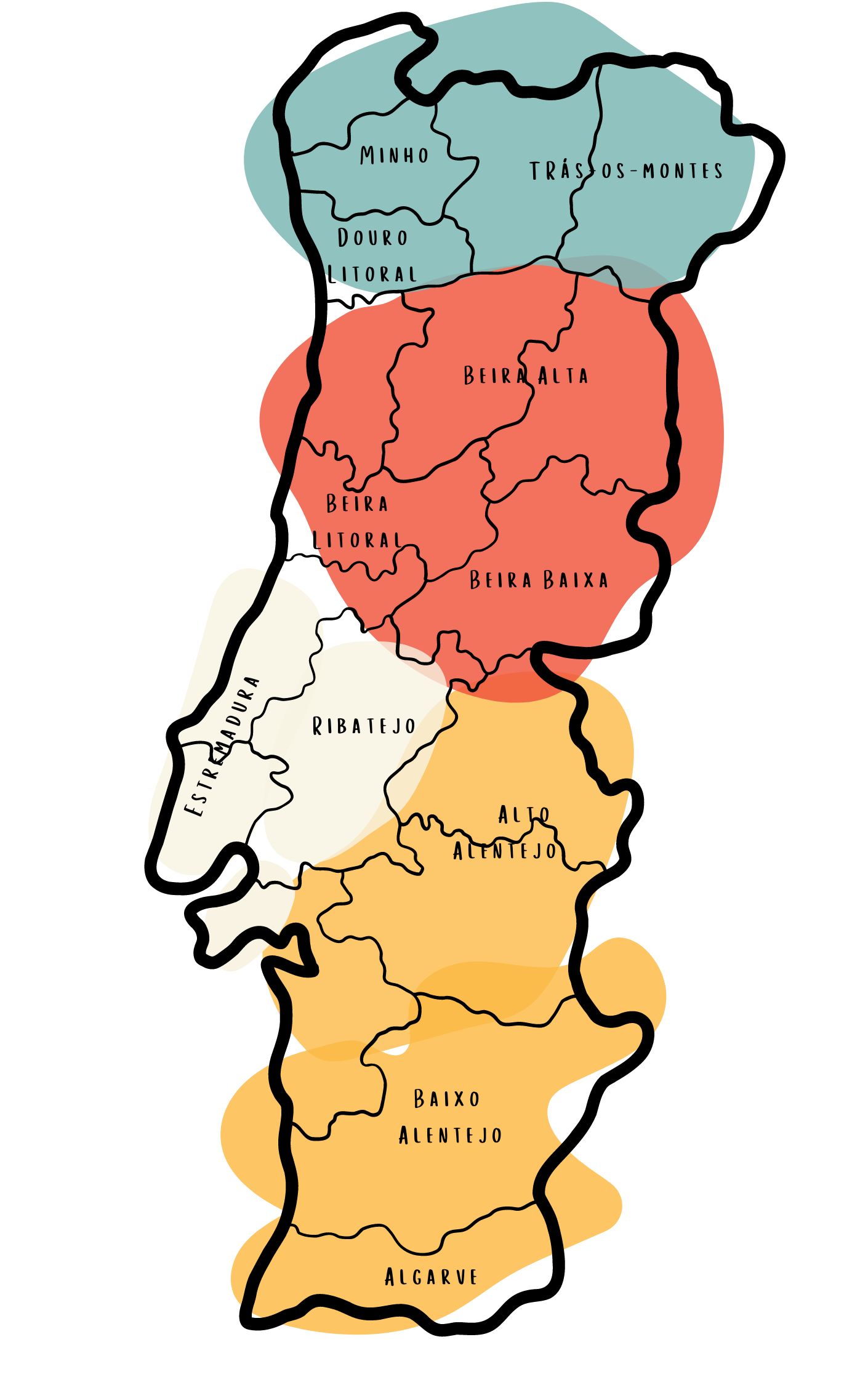
Broadly speaking, Minho’s food is rustic, humble but very filling. Historically, Minho hasn’t been a wealthy region and thus its food habits reflected that. Special occasions such as religious celebrations and community gatherings were when the dishes we now identify as typically from the Minho were usually prepared and eaten. Portugal’s most popular soup, caldo verde, was developed here in the 15th century and it is still associated with weddings today. This soup consists of a potato and onion puree with shredded collard greens (known in Portuguese as couve-galega, reiterating the cultural connection between Minho and Galicia, in Spain). It is customarily served with one slice of chouriço or linguiça, that is paprika infused cured pork sausage, and enjoyed alongside broa. Broa is a semi hard and crumbly cornmeal bread, which can either be prepared with white or yellow corn, which has been extensively cultivated in Minho after the Columbian Exchange which started in the 15th century. Before American corn was introduced to Europe, a similar bread to broa was already being prepared, but using millet instead of actual corn, like it is done until today. In the town of Avintes, which belongs to the region of Porto which we explore in more detail below, you find one of the most valued broa breads, broa de Avintes, which is dense, sweet and malty, and confirms our theory that supports food traditions do not cease to exist because of man-made geographical and political borders.
Pig slaughter festival, pork dishes and other traditional meat recipes
Back in the days when families used to raise their own pigs, and some still do today, a little all over Portugal, the pig’s slaughter just before winter was synonymous with abundance of food and the opportunity to taste particular dishes. The day of the slaughter was (and still is) a celebration known as matança do porco, in which you’d sacrifice a well-fed animal which would be dissected into different cuts of meats, some to be eaten fresh, and some to be cured as charcuterie. The slaughter explains popular Minho dishes such as papas de sarrabulho, a savory porridge prepared with pieces of meat, pig’s blood, corn flour and a few other ingredients. Arroz de sarrabulho follows the same principle as papas de sarrabulho, substituting the finely ground corn for rice. If you are into bloody dishes, don’t overlook arroz de cabidela (also known as galinha de cabidela), which consists of a loose and velvety rice dish with pieces of chicken, chicken’s blood and a tad of vinegar to avoid coagulation. This zero-waste cooking approach extends even to desserts, so don’t be surprised if in the Minho you come across filhoses de sangue, that is, a fried dessert made with a flour, blood, water and sugar batter.
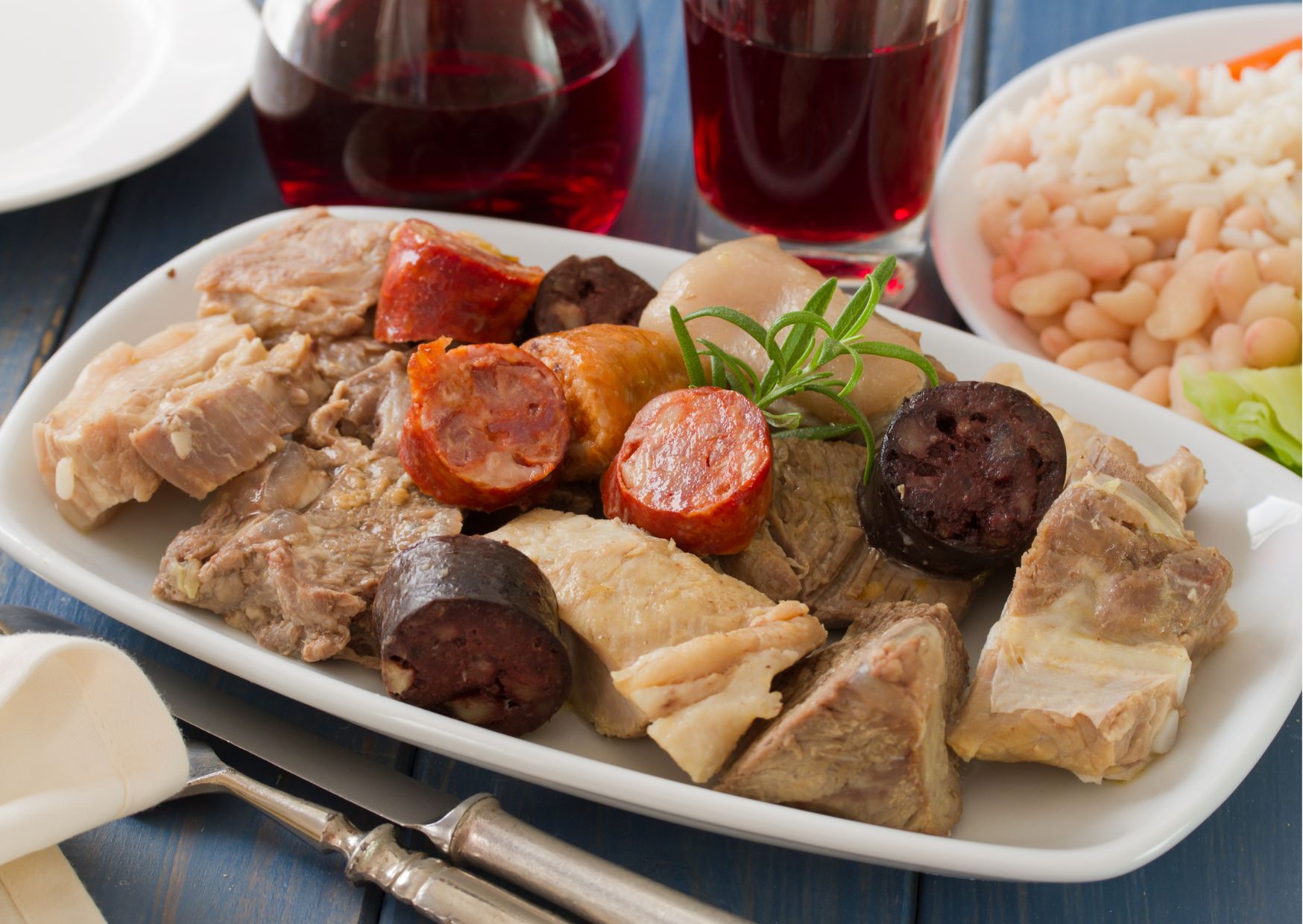
‘Cozido à Portuguesa’
Everything was meant to be used when killing a pig, and was done in a variety of ways which lived on to make up a lot of the Minho recipes repertoire. When you travel in the north of Portugal you must try rojões, that is chunks of fried pork meat served with cubed fried potatoes, cured sausages like the thin and paprika rich linguiça, and also stews where several meats and vegetables make it to the pot, such as cozido à Portuguesa. This Portuguese meats stew, also a part of Galician cuisine under the name cozido Galego, is actually present all over Portugal, only with regional adaptations such as the mandatory presence of alheira in Trás-os-Montes, the replacement of poultry for lamb in the Alentejo, the addition of spearmint in the Algarve, or the particularity that it is cooked underground with the aid of volcanic heat in the Azorean island of S. Miguel, where the dish goes by the name cozido das Furnas.
Exclusively in the northern regions of Portugal, namely Minho, Trás-os-Montes, Alto-Douro and, to a certain extent, the Beiras region, we find an autochthonous type of pig of the breed Bísaro. For quite some time, raising Bísaro pigs fell into disuse, but it’s a northern tradition that is now bouncing back for the sake of recovering part of Minho’s culinary heritage which was at the risk of being lost. These native pigs are, in gastronomic terms, at the level known as Iberian pork. They are large animals, with drooping ears and black or spotted fur. Raised in an ecological production system – in places such as Quinta de Folga – they feed on cabbage and, in October and November, also on chestnuts from the ‘terroir’, responsible for the meat’s special flavor. This is excellent quality pork, presenting a very balanced flavor, which guests who join our Original Lisbon Food and Wine Tour are able to enjoy in the form of cured ham.
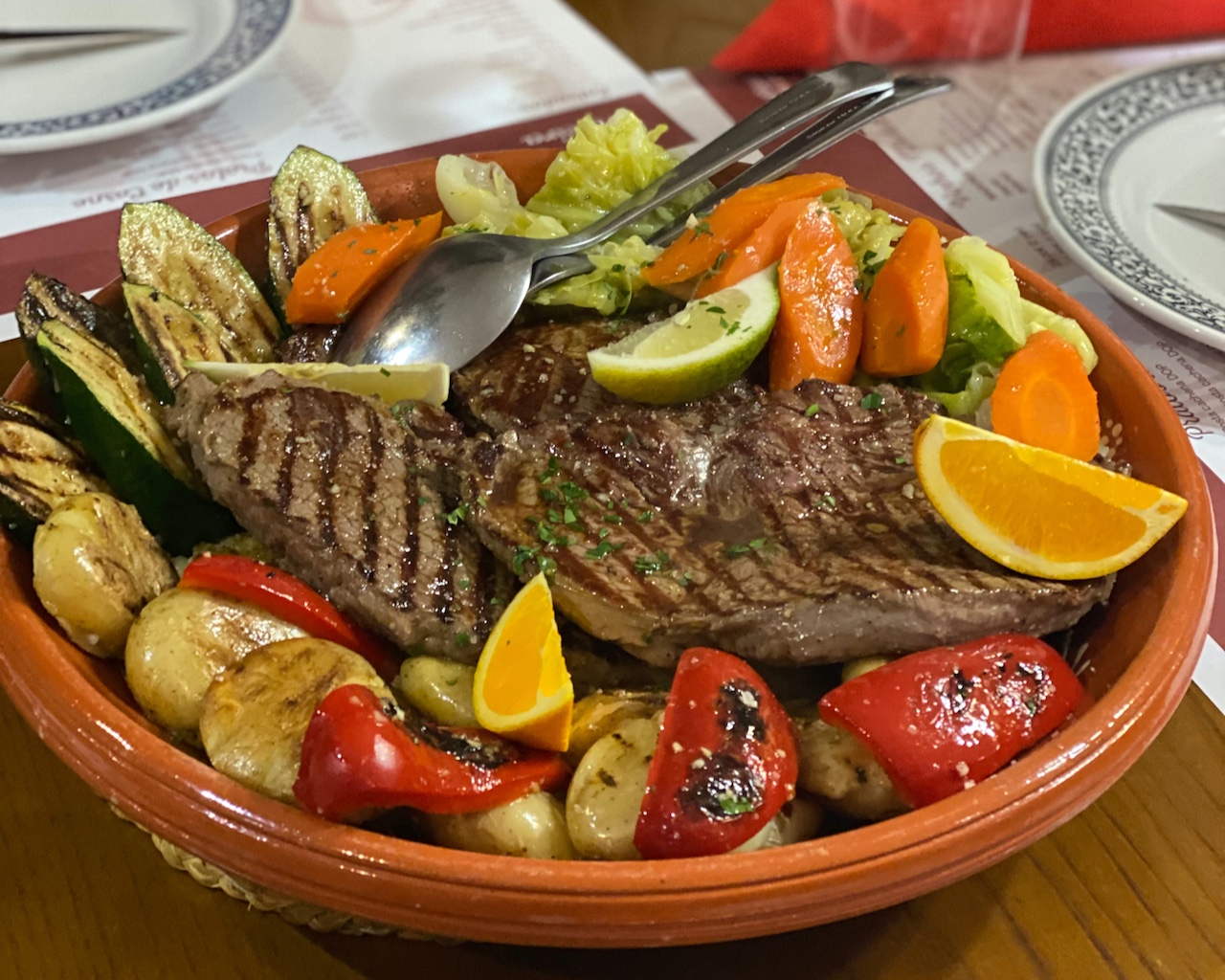
‘Cachena’ beef at a restaurant in Soajo village
Besides pork, other meat dishes typical in the Minho region include cabrito assado, that is roasted lamb with potatoes, traditionally cooked in wood ovens (often the same ones used for bread thus explaining the name cabrito à padeiro, that is, baker’s style lamb), as well as arroz de pato, rice cooked with shredded duck and finished au gratin in the oven for a golden top layer flavored with sliced chorizo.
When it comes to beef, just like it happens with Bísaro pigs, we see in recent years efforts to revive the Cachena breed of cows, which was until not so long at risk of extinction. Thanks to small producers, such as Adelino Esteves, Cachena beef is now making a comeback. The DPO Cachena beef has unique flavor and texture, characteristics which derive from the habitat where the cows graze and grow. Coming from Peneda/Gerês, an area with one of the most pristine protected national parks in Portugal, this breed lives in a mountain area 800 meters above sea level, in a pure and wild environment, feeding exclusively on natural pastures rich in heather, gorse, broom, and gorse. The meat, which is tender and juicy, is often featured in a local dish known as carne da Cachena com arroz de feijão Tarreste. The beef is roasted in a wood oven, and served with rice and feijão Tarrestre, indigenous to Serras da Peneda e Soajo, in the Minho region, and which is being studied and protected by the Slow Food Foundation for Biodiversity.
Salted cod from overseas and lamprey from the Minho river
If there’s one thing that is common across the several regions of Portugal, that is the existence of at least a few stellar bacalhau recipes. Up in the Minho, recipes such as bacalhau à Minhota and bacalhau à Gomes de Sá are some of the most beloved. Bacalhau à Minhota, aka salted cod Minho style, consists of fried thick filets of cod, served with fried potatoes, onions and assorted bell peppers. Bacalhau à Gomes de Sá is a casserole which embodies the heartiness of most of Minho’s cuisine, bringing together in one pot shredded cod, potatoes, onions, boiled eggs and black olives as garnish. Cod fritters, known in the north as bolinhos de bacalhau but in the rest of Portugal as pastéis de bacalhau, are also believed to have originated in the Minho region, but there are no official records that confirm this. Genesis aside, these are egg shaped shredded cod and potato fritters much liked as an appetizer all over the country, and were only possible thanks to the Portuguese voyages overseas, after the introduction of cod coming from the North Atlantic, but also potatoes brought in from South America.
From this quick overview, it would almost look like in the Minho, just like it happens in many parts of Portugal when we study main meals or servings at restaurants, vegetables aren’t consumed that much at all. It’s relevant to note that, in our country, most vegetable intake is done in the form of vegetable soup, sopa de legumes, which we frequently consume as a starter for lunch and, fairly often, as the main dish for dinner.
If you’re looking for something truly unique while exploring the Minho region, keep an eye out for lamprey, which is an ancient jawless fish from the Minho river, only available seasonally. Somewhere between mid February and mid May, you may come across lamprey, especially prepared as arroz de lampreia (a soupy rice dish with pieces of lamprey prepared in a dark broth enriched with red wine), which will feature in the menus of restaurants in towns bordering the rio Minho.
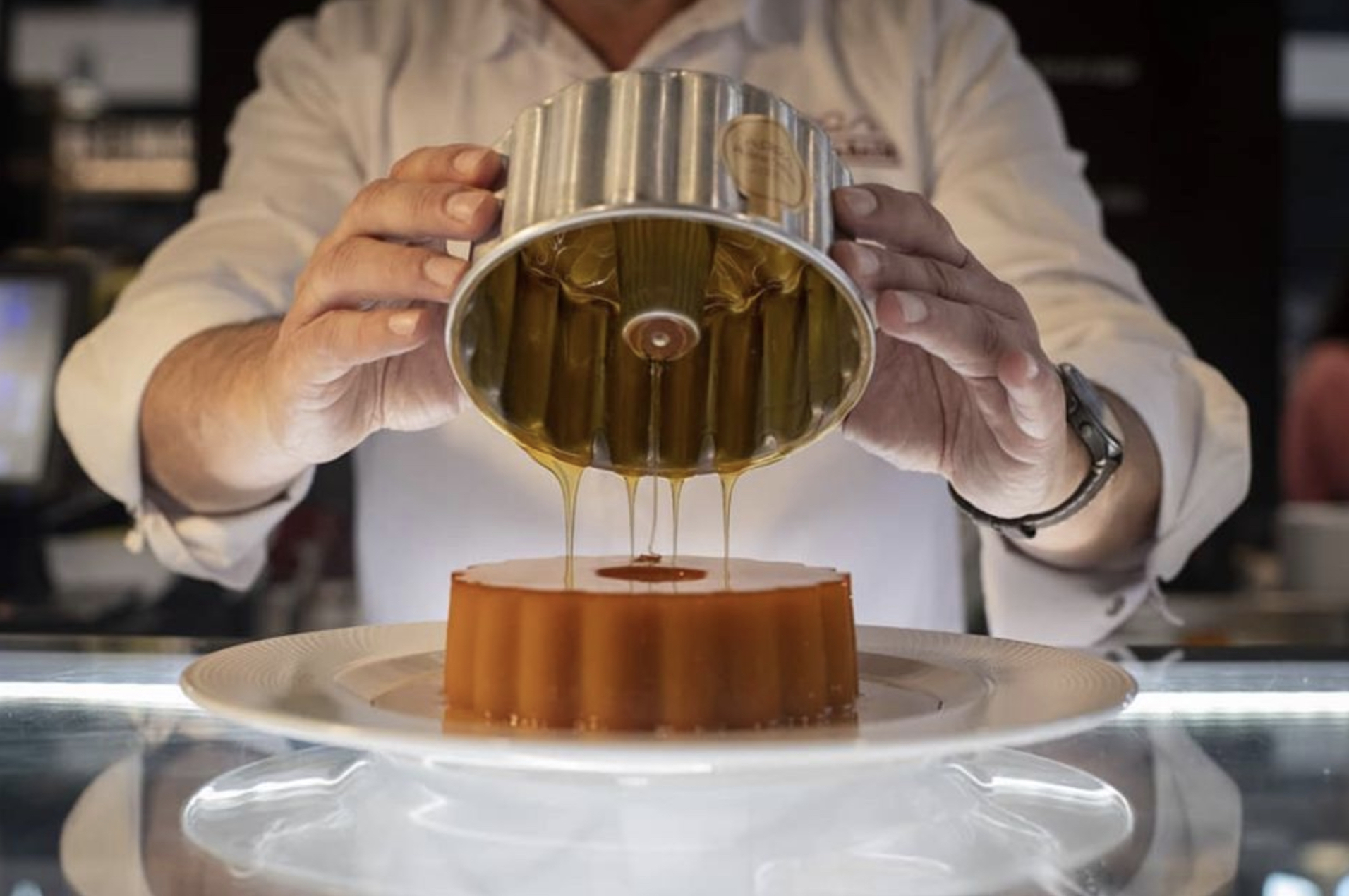
‘Pudim do Abade’, perfected by Chef Miguel Oliveira (photo from Pudim do Abade)
Minho’s traditional sweets
Minho’s sweet repertoire includes one of Portugal’s most common and liked desserts, arroz doce, which consists of a sweet rice pudding prepared with milk and egg yolks. A similar recipe which replaces the rice for thin angel hair pasta (an inheritance from the times of the Moors in the Iberian Peninsula) is aletria, particularly popular for dessert at Christmas time.
But if there’s one northern dessert that stands out above all others because of its history and unique recipe, that is pudim Abade de Priscos, which we could liberally translate to English as bacon pudding. This is an egg yolk rich pudding whose recipe was developed by Father Manuel Joaquim Machado Rebelo, the Abbot of Priscos, in the 19th century. Besides the copious amounts of eggs used in the recipe, it also includes bacon, mostly the white fatty part, which gives the pudding a luscious appearance and extremely velvety texture on the palate. The use of lard has historically been common in many of Portugal’s confections, even though today many of the desserts once made with pig’s fat are now prepared with butter or margarine. But when you try pudim Abade de Priscos, which you can do at its birthplace in the city of Braga, you know for sure that bacon is one of the included ingredients.
What is Vinho Verde or green wine?
In the domain of drinks, even though the region of Minho produces a variety of wines, by far its most famous one is Vinho Verde. This wine whose name literally translates as green wine, is often reductively perceived as a young wine which has simply not been allowed to mature, but it isn’t quite like that. Vinho Verde refers to the demarcated wine region which geographically corresponds to the area known as Entre-Douro-e-Minho and only producers from this zone, following the traditional methods of winemaking with controlled designation of origin, can label their wines as Vinho Verde. Vinho Verde is very fresh, slightly fizzy, with fairly low alcoholic content (hardly ever reaching 14º) and should be served chilled. It comes in red, white, rosé and sparkling varieties, but the most consumed one is indeed the white one, which pairs beautifully with typical Portuguese dishes from all over the map, particularly lighter recipes such as charcoal grilled fish and pan-fried or steamed seafood.
Porto and the Douro Valley
Much more to taste than wine
 When travelers who visit Portugal think about the city of Porto, fortified Port wine is quite probably one of the first things that comes to mind. But there’s just so much more to explore when it comes to the culinary delights of the Douro area!
When travelers who visit Portugal think about the city of Porto, fortified Port wine is quite probably one of the first things that comes to mind. But there’s just so much more to explore when it comes to the culinary delights of the Douro area!
The Douro Litoral region got its name thanks to the Douro river which originates in the Soria province of neighboring Spain, crosses Portugal widthwise and eventually flows into the Atlantic ocean. The Douro river and the fertile lands that surround it over the Douro Valley have had a great impact on the culture and food habits of this part of the country.
Douro DOC is one of the world’s oldest demarcated wine regions in the world, precisely since 1756, thanks to the Marquis of Pombal administration. Even though Port wine got its name from the city of Porto, the truth of the matter is that the vineyards where this wine is born extend across all the Douro Valley (within the Douro Litoral and Trás-os-Montes regions) and even though it used to be exported by sea from the city of Porto, not only the wine wasn’t produced there, the cellars where it would mature did and still happen to be in Vila Nova de Gaia, right in front of Porto across the Douro river, where land was cheaper and the weather more conducive for storage and aging in barrels. But the Douro wine region has a lot more than fortified wine, and trying the distinct table wines offered around here is a must do thing while visiting the region. In fact, one of the most entertaining and charming activities you can look into doing while traveling around Porto, would be to take a day trip to the Douro Valley to visit at least one or two wineries, take in the impressive views of the vineyards perched on the cliffs on the sides of the Douro river and, if you fancy a little adventure, take a boat down the Douro to appreciate the sights from a different angle – all of that, of course, with a glass in hand!
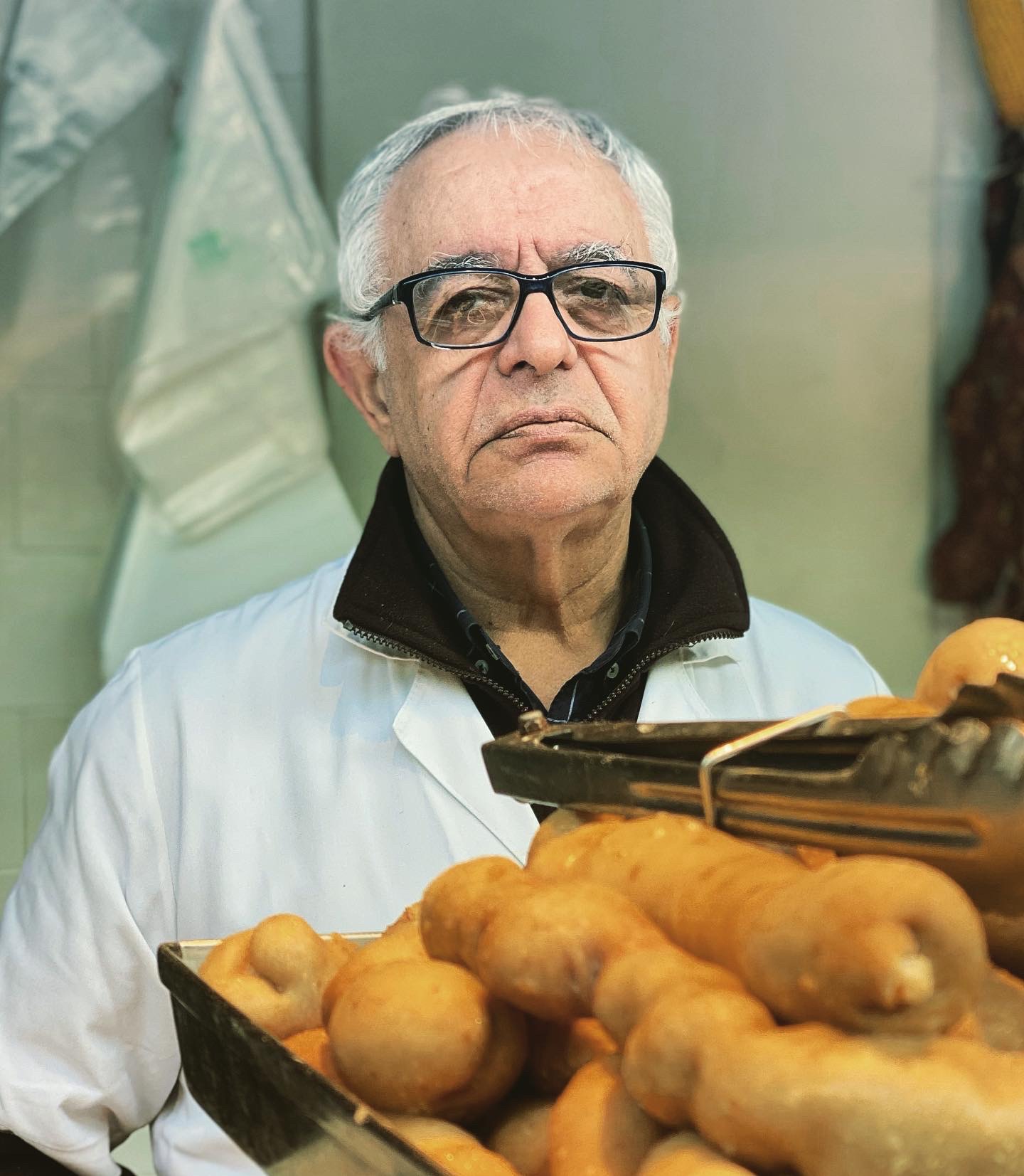
Bulhão market, one of the reputed ‘tripas’ seller (Salsicharia Luísa)
Douro’s traditional cuisine
Besides wines, the gastronomy of Douro is headlined by the typical dishes of Porto. When we think about old-time recipes, tripas à moda do Porto has no competition as the most notable regional dish. This dish can be found elsewhere in Portugal, under the name dobrada com feijão branco, but nowhere is it as relevant as in Porto. Beef tripe and white beans stewed in a rich tomato based sauce has been one of the staples of Porto for over 600 years. The residents of Porto are colloquially referred to as tripeiros, that is tripe eaters, by the rest of the Portuguese. Some versions explain this nickname because of Porto residents’ fondness for the dish, while others insist on the less likely story that it has to do with the maritime voyages which inaugurated the age of explorations, which started back in 1415, and during which the local residents were forced to give the best foods for those who’d go on the overseas expeditions, and hence were left with nothing but scraps, offal and tripe.
Another dish that has become synonymous with Porto, but that is a much more contemporary creation, is Francesinha. Even though it is often referred to as a sandwich, Francesinha is way more than bread and meat fillings. It consists of two slices of bread stuffed with ample cuts of steak, fresh sausage and ham, topped with a fried egg and melted cheese, drenched in a heavy beer and tomato sauce. As if this wasn’t enough of a “heart attack on a plate” kind of dish, the customary side dish for Francesinha is fries, which taste particularly interesting when dipped in the Francesinha sauce. Francesinha is Portugal’s take on the croque monsieur from France, and it was developed by former emigrant Daniel David Silva, who upon returning from France to Porto in the 50s decided to do a more local version of the popular sandwich. Making it more Portuguese, honoring the good old traditions of the north of Portugal, translated into stuffing it with more meat, and making it heavier. In case you didn’t know, it’s actually accepted to order half a Fracesinha when you go to eat out in Porto.
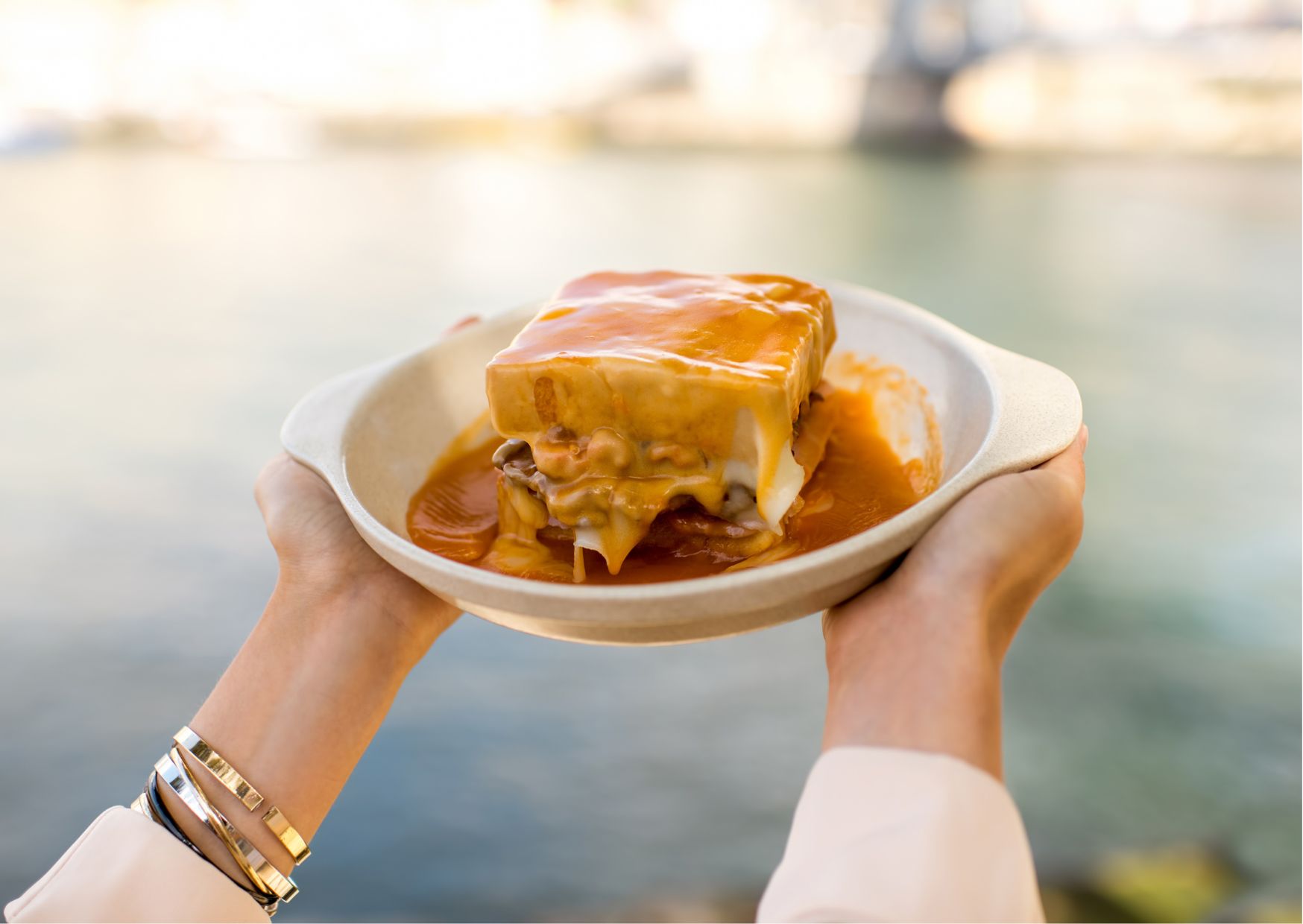
Portuguese ‘Francesinha’
In the field of fish, the coastal city of Matosinhos which is bordered on the south by Porto, promotes itself as having the “world’s best fish”. Of course the titled is still up for debate, but a stop by the local market, Mercado Municipal de Matosinhos (Rua França Júnior, 4450-718 Matosinhos), will give you a good insight on the many varieties of wild Atlantic fish (and also fresh crustaceans and molluscs) that the Portuguese regularly consume: seabass, grouper, different species of sea breams, John Dory,
flounder, turbot and more! When you go out to eat fish in Portugal it’s important to understand that in cheaper places with simple fish dishes such as grills the dishes are usually set down per portion but, when it comes to wildly caught fish, the prices are usually listed per kilo, and the final price of your serving will depend on the actual weight of the creature. Some fishes can be served individually or portioned, while others are usually sold whole and are best enjoyed with company. Customary side dishes for grilled fish, Portugal’s favorite way of enhancing something that tastes so good in all its simplicity, usually involve boiled potatoes and a few vegetables like carrots, broccoli or green beans.
Because bacalhau is always present on the Portuguese table, no matter where in the country you go, we end our brief overview of the regional cuisine of Porto and the Douro region with a mention to bacalhau à Zé do Pipo, one of the most typical salted cod dishes around here. Bacalhau à Zé do Pipo is a modern day recipe, just dating back to the 60s, when Porto restaurateur José Valentim, popularly known as Zé do Pipo, came up with it for a contest which aimed at promoting our culture and tourism.
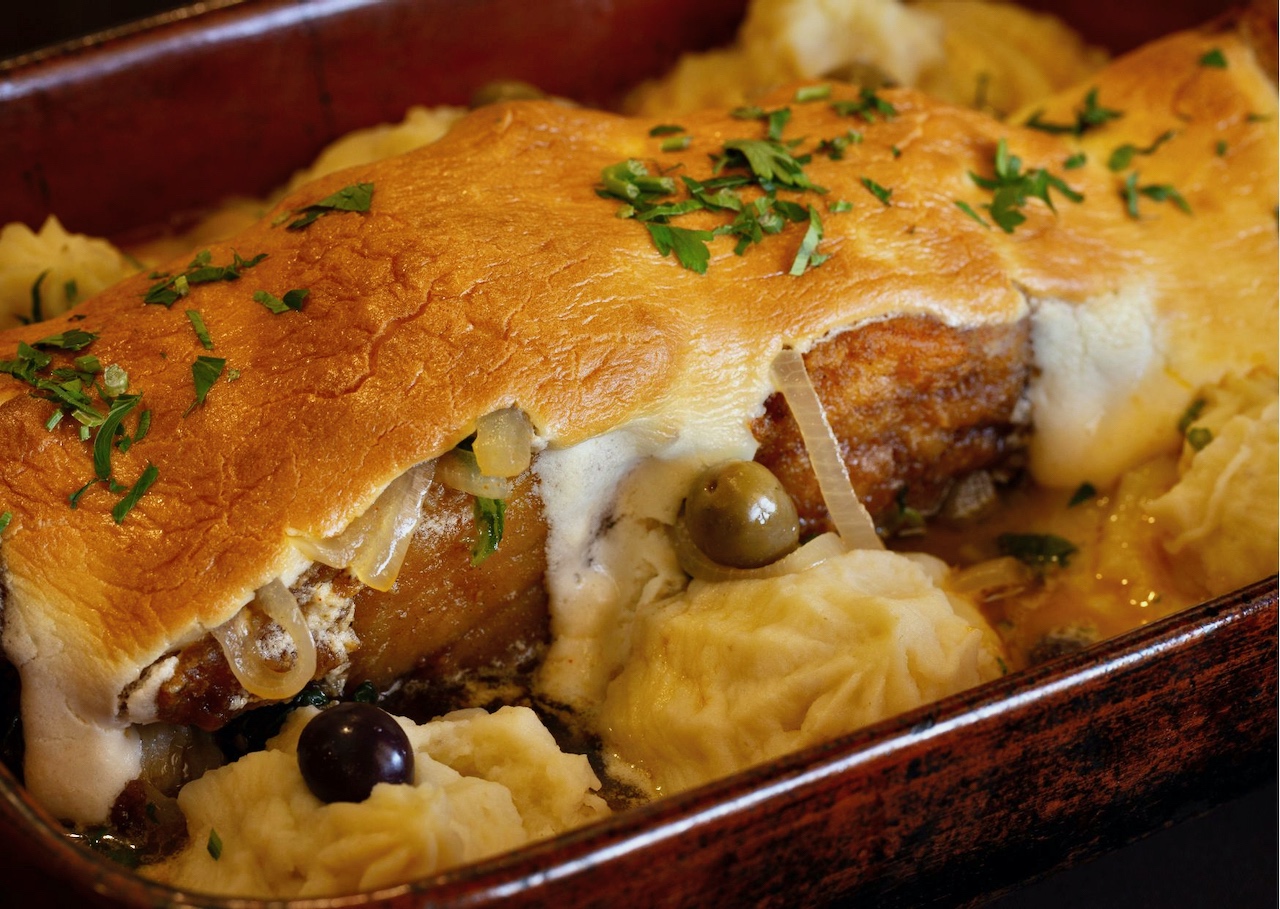
Cod ‘Zé do Pipo’ style
Bacalhau à Zé do Pipo comprises salted cod cooked with onions in olive oil, covered with mashed potatoes and a top layer of mayonnaise, which is taken to gratin in the oven.
Typical pastries from Porto
For a happy ending in Porto, or actually to start the day with a sweet breakfast, don’t miss out on the Jesuíta. This triangular shaped pastry was created in Santo Tirso and has a base of extremely flaky puff pastry, topped with either a meringue icing or a sprinkling of flaked almonds and powdered sugar. The filling can feature a kind of spaghetti squash jam, or a syrupy almond meal and egg cream. Another Porto classic for breakfast or during a coffee break in the afternoon would be croissants brioche, also referred to as croissants à moda do Porto, which have nothing to do with the buttery Parisian creations. Instead, Porto’s take on a croissant is closer to a milky sweet bread, or a brioche, dense and doughy, but shaped like a crescent.
Trás-os-Montes: smoked meats galore!
Traditional cooking from “behind the mountains”
Trás-os-Montes is bordered by Spain to the north and to the east, by the Minho province to the west and the Beiras region to the south. To the contrary of many provinces of Portugal, Trás-os-Montes has no access to the ocean and, just like its name points out, it’s a land behind the mountains.
Historically speaking, folks living in Trás-os-Montes haven’t had tremendous amount of exposure to the rest of the country and, until better infrastructure was build to promote a healthier exchange, many of the towns in this area ended up having more trade and dialogue with Spanish Galicia up north than with the rest of Portugal itself. This explains the presence of octopus, polvo, on the local Christmas eve dinner table, which used to be imported (and during the dictatorship even smuggled) from Galicia.
Moscatel do Douro: another fortified wine!
Even though this is often overlooked, it’s important to point out that the Douro Valley, famous for the production of fortified wine and other table wines, actually extends into the province of Trás-os-Montes. It’s also in this part of the Douro where another fortified wine different from Port, in this case made with muscat grapes, is produced. There are two territories in Portugal which make sweet and floral vinho moscatel and, the portion of the Douro Valley around the towns of Alijó and Favaios, in Trás-os-Montes, is one of them. Knowing this, you must not skip trying a moscatel do Douro when visiting the region, keeping in mind that besides the most common versions which age for about 18 months in wood barrels, you can also have premium moscatel aged for 10 or even 20 years, bottled under the name colheita.
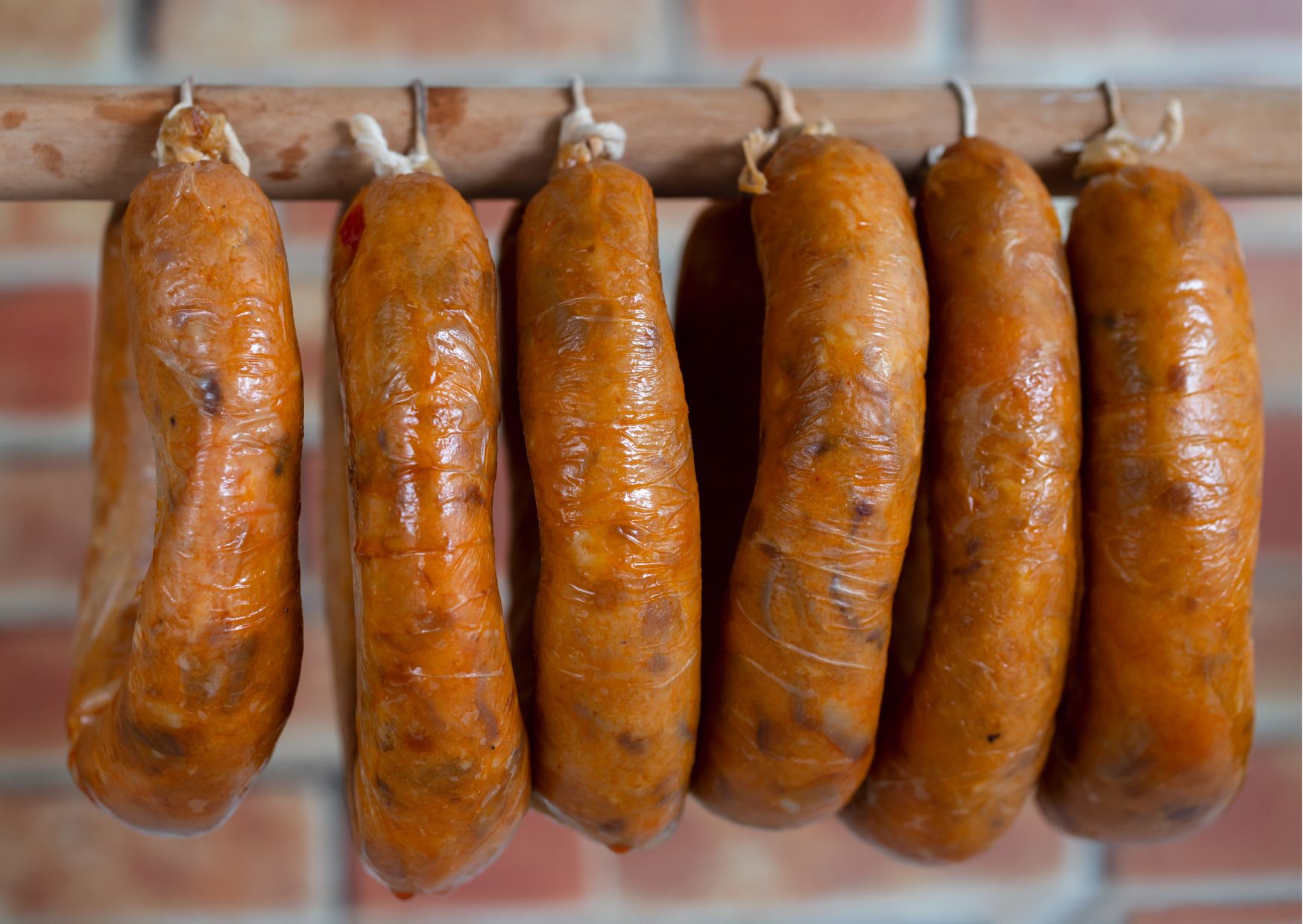
‘Alheira de Mirandela’
Jewish influences on Trás-os-Montes’ local cuisine
Drinks aside, the typical foods from Trás-os-Montes have historically been linked to the Jewish population of Portugal. After the beginning of the catholic Inquisition in Spain around the 12th century, a lot of Sephardic Jews that used to live across the border found a more peaceful life in Portugal and, more specifically, in the somehow isolated area of Trás-os-Montes. Three centuries later, the persecution of Jews was also a reality in Portugal and so were the forced conversions to the christian faith. One of the foods that came about during this time, around the 15th century, was the alheira, also known as alheira de Mirandela, including a reference to its place of origin in its name. This is a sausage made with poultry and game meats, bulked up with bread and seasonings such as garlic (alho in Portuguese). Shaped to look like a pork sausage, alheiras would fool anyone who’d think a given family would be avoiding a non kosher ingredient, thus pointing that the persons in question were most likely following the new faith. Just like the alheira, the farinheira, a sausage look-alike made with flour, fat and similar seasonings, was yet another creation of the Jews of Portugal, who managed to keep up with their food habits, religious worship and way of life behind closed door, until freedom of religion was a reality in Portugal centuries later. Bear in mind that, now-a-days, you’ll find alheiras and farinheiras containing pork meat and fat. For a fully kosher alheira, ask for alheira de caça, that is game meat and poultry sausage.
A paradise for meat lovers
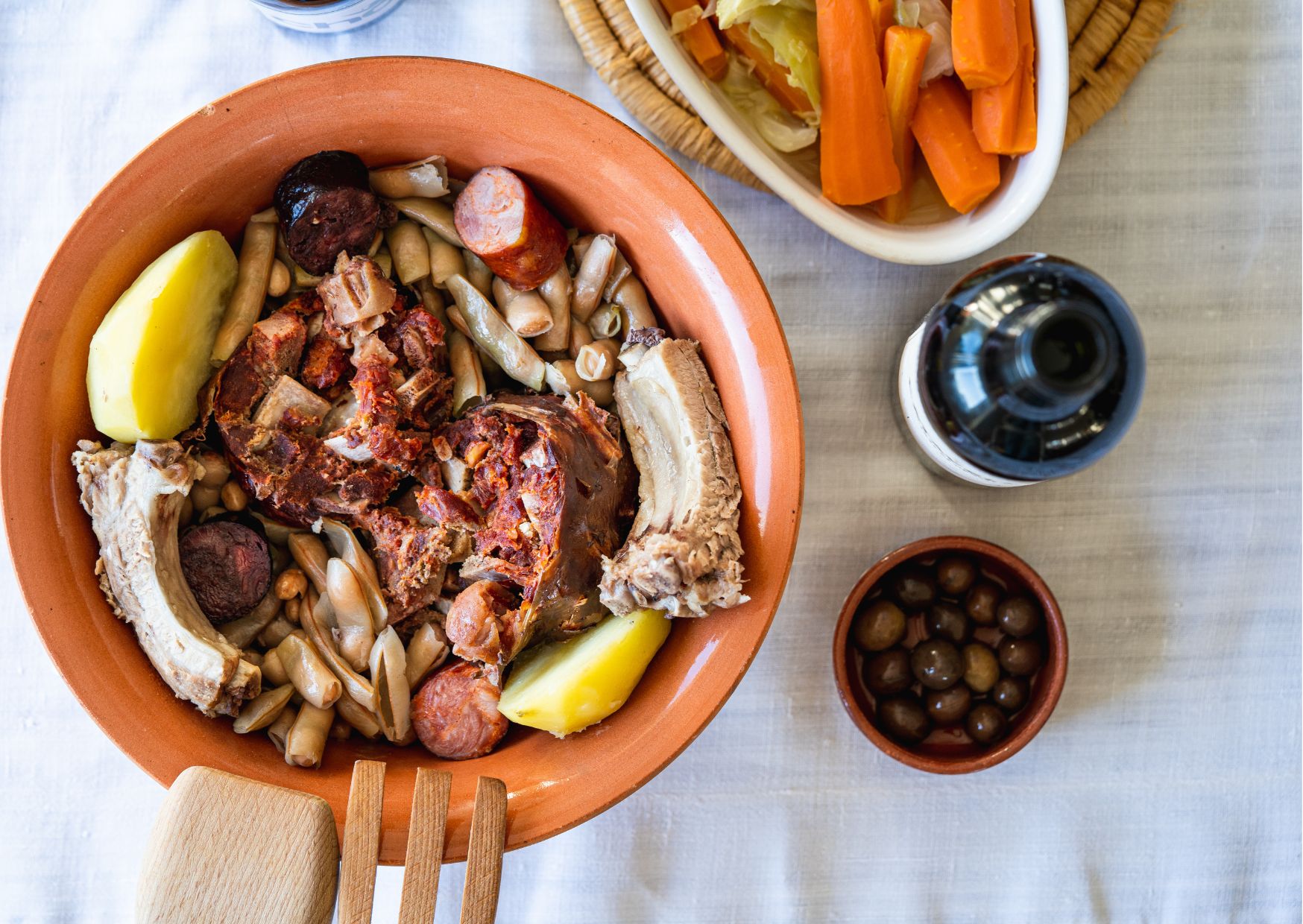
‘Butelo’ served with potatoes and ‘casulas’
If you are a cured meats lover traveling around Trás-os-Montes, make sure you include Vinhais in your itinerary. The self proclaimed “Portuguese capital of smoked meats” is a paradise on earth for all things meaty, porky and smoky, celebrated during a delicious annual event. The repertoire of cured meats which you will find in this province of Portugal, known in Portuguese as enchidos, is truly astounding. These enchidos are traditionally prepared from Bísaro pork, a type of domestic pig breed that is native to Portugal. While in Vinhais or elsewhere in Trás-os-Montes, try specialties such as presunto de Chaves (cured ham from the city of the same name), morcela (blood sausage), chouriça de carne de Vinhais (chorizo from Vinhais, known for its higher content in actual pork meat vs fat), salpicão (pork loin cured with wine and seasonings, meat to be eaten thinly sliced), butelo (smoked pig’s stomach stuffed with bits and pieces like ribs and vertebrae, which sounds uniquely odd but is surprisingly good), and chouriça de mel (sweet pork sausage with honey).
Many of these enchidos are great on their own, but they are above all important as key elements of the most typical dishes of the gastronomia transmontana, that is the cuisine of Trás-os-Montes. Characterized by substantial meals like casseroles, the repertoire of traditional dishes from Trás-os-Montes includes butelo com casulas (boiled butelo served with potatoes and casulas, soft bean pods which are dried and later on rehydrated when cooking) and feijoada à transmonana, a beans and meats stew which the world largely associates with Brazil these days, but that has its origins in Trás-os-Montes before the Portuguese exported the recipe across the Atlantic during colonial times.
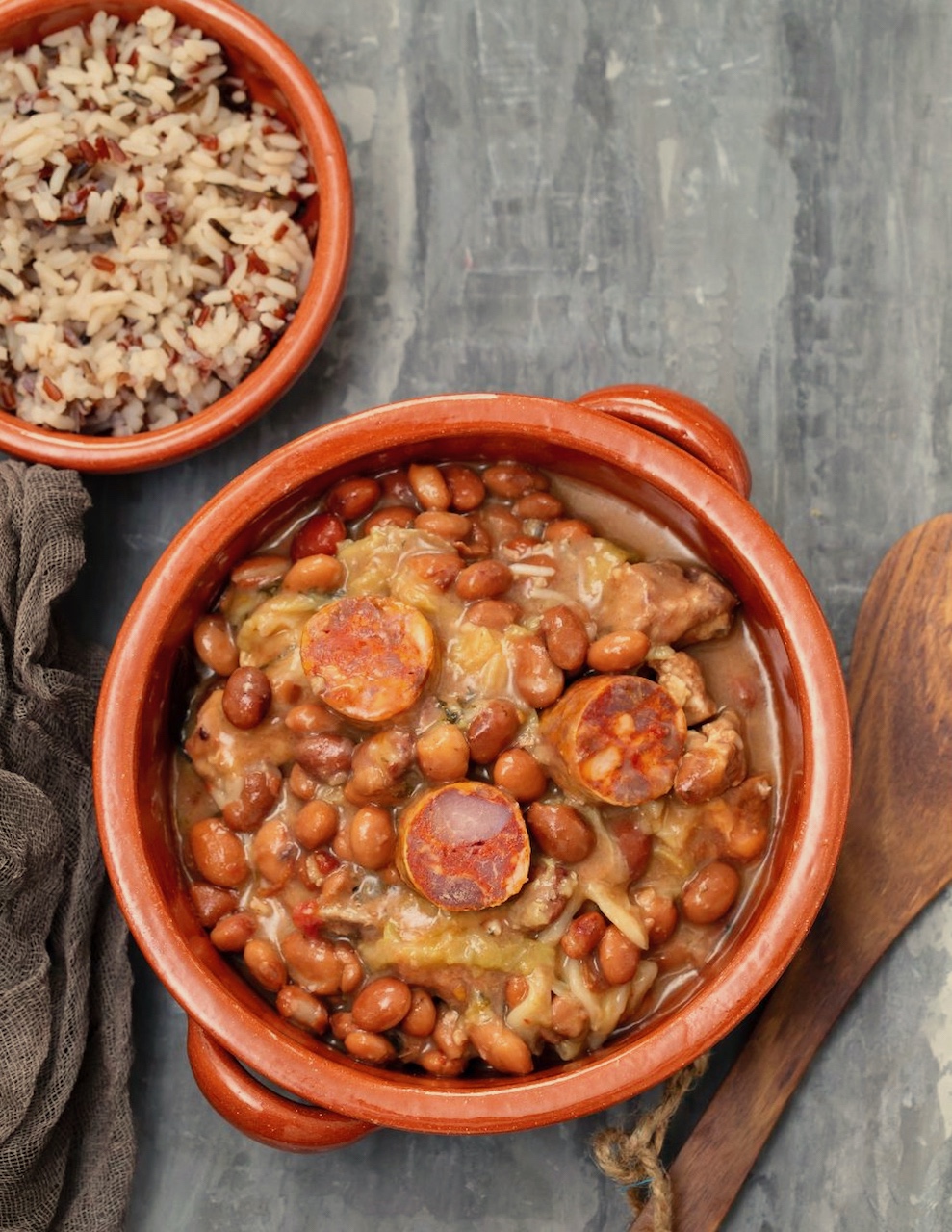
Portuguese ‘Feijoada’
But not everything is about pork up in Trás-os-Montes. Beef lovers will be happy to know that one of Portugal’s most appreciated steaks is from here. We’re talking about posta à Mirandesa, a huge succulent piece of meat, usually eaten simply grilled with no fuss. Mirandesa beef is protected and controlled with a denomination of origin label, which guarantees that the animals of the Raça Bovina Mirandesa breed are free range and raised with as natural as possible foods. Beef is also used in the city of Chaves as a filling for the crackinly good pastéis de Chaves, which are half moon shaped puffs with a smooth stuffing of flavorful minced beef.
Rye bread, cheeses and sweets
Because the sandy soils of Trás-os-Montes are favorable for growing rye, a crop which is more tolerant to drought and frost than other cereals, pão de centeio is the staple bread of this region. It is often enjoyed with local cheeses like queijo de cabra Transmontano (goat cheese) and queijo Terrincho, a DOP cheese made with raw sheep milk.
One of the most distinctive baked goods you can try in Trás-os-Montes is folar Transmontano, made with a slightly sweet and rich dough like brioche and stuffed with different cuts of smoked meats. While in other parts of Portugal folar is a treat you’d normally celebrate Easter with, in Trás-os-Montes artisanal bakeries make fresh folar de carnes all year long – isn’t that enough of a reason to visit the north of Portugal? After you try folar transmontano, you’d probably agree with us in claiming a resounding yes!
Itinerary overview for a food trip in the North of Portugal
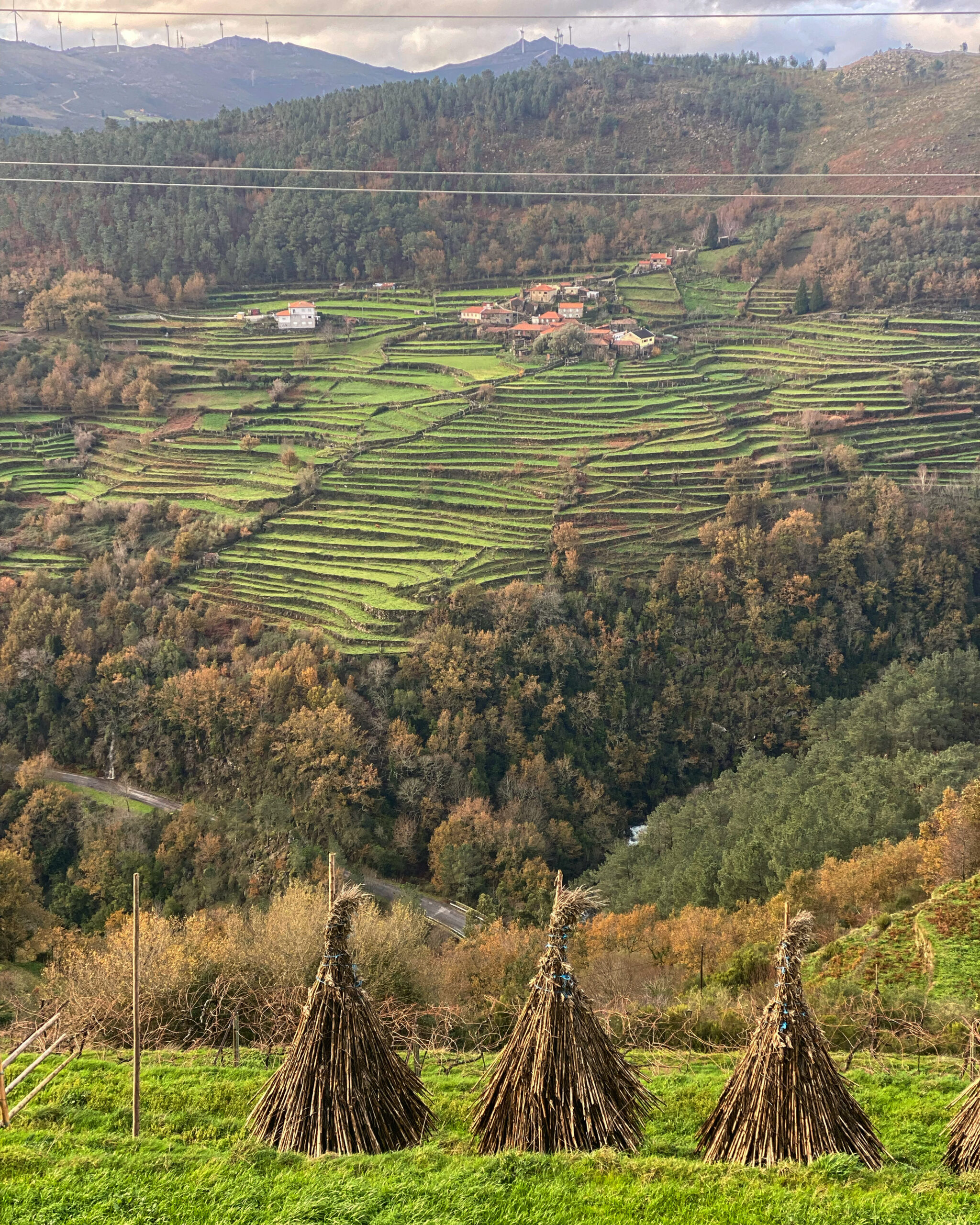
Villages around Sistelo
Most characteristic places you should visit:
- Vinho Verde wine region (particularly around Monção and Melgaço)
- Ponte de Lima
- Viana do Castelo
- Braga
- Porto
- Peso da Régua and the Douro Valley
- Vila Real
- Chaves
- Vinhais
- Bragança
Must-eat traditional dishes from the north of Portugal:
- Caldo verde with broa cornbread
- Bolinhos de bacalhau
- Pudim Abade de Priscos
- Tripas à moda do Porto
- Francesinha
- Bacalhau à Zé do Pipo
- Jesuíta
- Alheira, farinheira and other typical enchidos from Trás-os-Montes
- Posta à Mirandesa
- Folar Transmontano
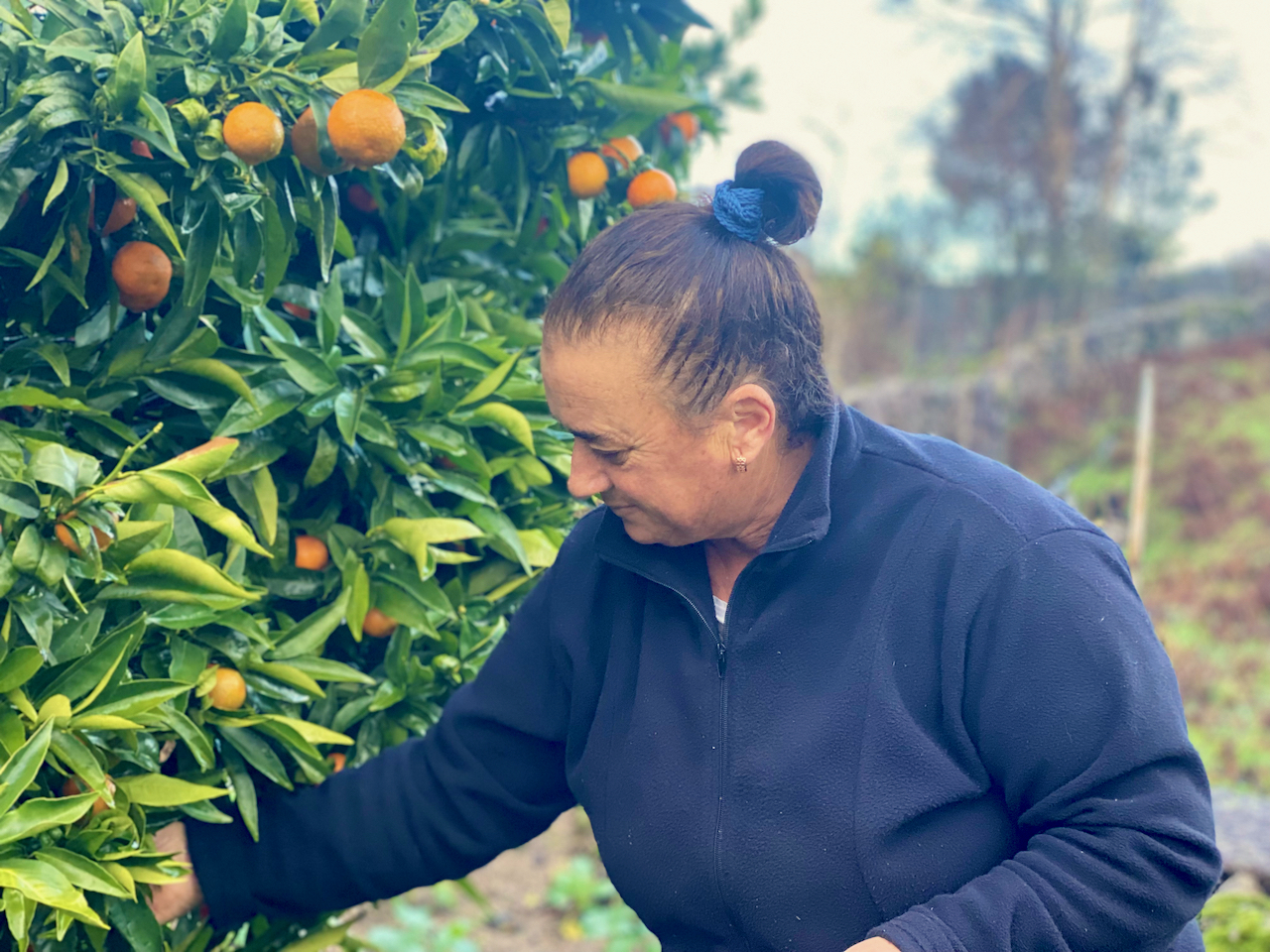
Maria, ‘cachena’ cow producer (Soajo village)
Typical drinks to try in Minho, Douro and Trás-os-Montes:
- Vinho Verde
- Port wine
- Douro table wines
- Moscatel do Douro
Off-the beaten path culinary treasures of Northern Portugal:
- When in season try lamprey from the Minho river – ask for it at traditional restaurants in the towns of Valença do Minho, Vila Nova de Cerveira, Caminha or Vila Praia de Âncora;
- Include Amarante in your route for the sake of eating arroz de cabidela at the wonderful restaurante Rei dos Galos;
- Visit the village of Boticas in Trás-os-Montes and sip the very rare vinho dos mortos, aka, wine of the dead.
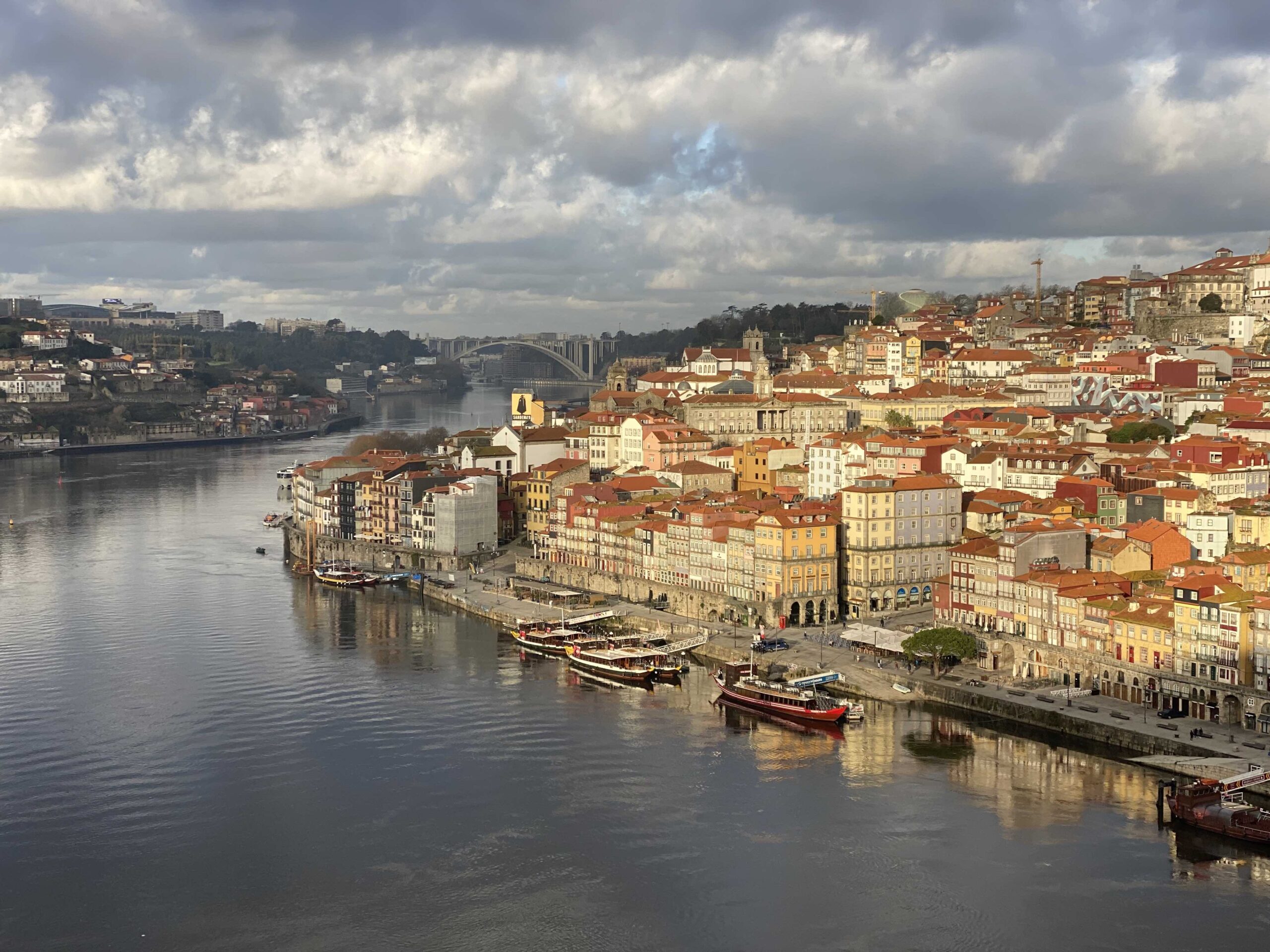
Porto city
Article by :
Zara Quiroga (freelance food writer and food & cultural leader at Oh! My Cod Pico Trips)
Sílvia Olivença (anthropologist and food guide/CEO at Oh! My Cod Ethnographic Food Tours & Trips)
Photos by:
Sílvia Olivença (anthropologist and food guide/CEO at Oh! My Cod Ethnographic Food Tours & Trips)
Want to more about Portuguese cuisine?
Pico Wine: one of the world’s most unique wine regions (Genesis – Part I)
